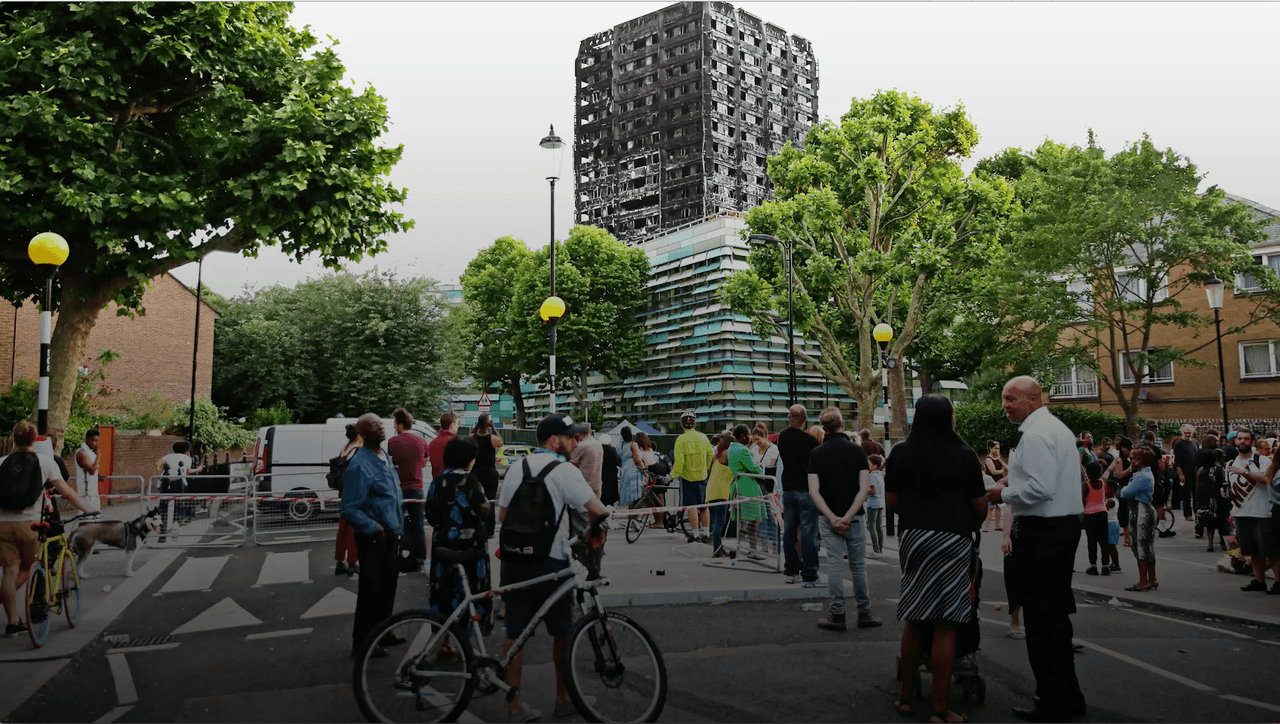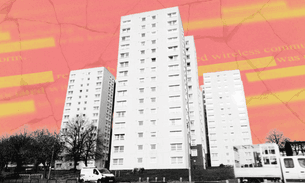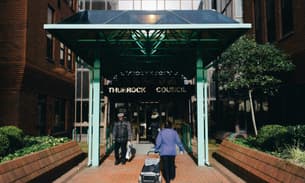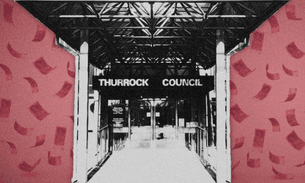
Grenfell tower timeline: The key events
In an investigation published today, the Bureau, HuffPost UK and the BBC Local Democracy Reporting Service revealed that Kensington and Chelsea council made £129 million from selling property in the years leading to the Grenfell fire tragedy. This money could have been spent on the tower’s renovation works, we established, but instead cuts were made to the budget, including saving £300,000 by using cheaper, more combustible cladding.
We also revealed that the council spent more than £60 million investing in new buildings in the years leading up to the fire on June 14, 201,7, which killed 72 people. Survivors of the inferno have accused Kensington and Chelsea of “acting more like a property developer than a council” when it should have been focused on fire safety at Grenfell.
Here, we detail exactly when key decisions about the tower's renovation and how to finance it were made, alongside the council's property deals:
- 27 May 2004: Kensington and Chelsea council approves proposal to improve the vacant basement spaces at Elm Park Gardens, Chelsea, so they can be sold to the market and developed into private, key worker and social rented housing
- 24 March 2009: Cabinet approves plan to offer three spaces at Elm Park Gardens to market to test demand. These spaces sell “easily” with a large number of bidders
- June 2011: The Corporate Property department at the council completes the sale of a further four basement spaces. In September 2011 a further 11 spaces at Elm Park Gardens are put up for sale
- December 2011: Kensington and Chelsea Tenant Management Organisation (TMO) asked by Kensington and Chelsea council to identify which of the borough’s housing estates is in greatest need of investment, in order to regenerate the area and reduce the “burden” on the council’s finances. The TMO lists Lancaster West and specifically Grenfell Tower as one of its top five priorities. As a result, the TMO is asked to provide indicative costings for the work, which would include new cladding. The total is estimated to be £6 million.
- March 2012: The TMO carries out consultation at Grenfell Tower about the proposed renovation. Council report describes “overwhelming support” for the plan.
- 2 May 2012: RBKC cabinet approves budget for £6 million to refurbish Grenfell Tower, funded by proceeds from the sale of basement spaces in Elm Park Gardens.
- January 2013: Discussions begin with Leadbitter, the proposed contractor, in order to “bring the [Grenfell] scheme within budget and to ensure that the project will deliver value for money”. Leadbitter estimates the work would cost £11.3 million. A council report describes the progress of these talks as “slow.”
- 16 July 2013: The TMO requests the budget for the renovation work be increased to £9.7 million, in order to upgrade the communal mechanical and electrical services, including the heating system. The council decides to put the contract out to tender “to ensure the best contractor is selected and value for money achieved.
- July 2013: Cabinet approves the increased budget of £9.7 million and a revised planning application is submitted.
- 10 January 2014: The revised Grenfell planning application, which includes the intention to use zinc cladding, is approved.
- 27 March 2014: The TMO agrees to the selection of Rydon Property Services Ltd as preferred contractor for the refurbishment. A report later notes the company had submitted “the most economically advantageous tender, scoring the highest on both price and quality.”
- 31 March 2014: The 2013/14 accounts show the council in “robust” financial health, with £267 million in total usable reserves and a £31 million underspend in its annual budget. The reserves include £37 million in a pot of money raised specifically from the sale of assets.
- June 2014: Work begins on site at Grenfell.
- 10 July 2014: A Housing Scrutiny Committee paper notes that while Rydon has been selected as preferred contractor “there are a number of items in the tender, relating to the scope of works and the planning conditions that need to be finalised before a contract sum can be finalised”. These works include “the cladding material and fixing method” which, the report says, could “result in increased cost,” adding: “We would therefore like to be prudent and plan for this possibility”. Meanwhile, the budget for the project is increased to £10.3 million so it includes a contingency of 6%.
- 16 July 2014: The TMO sends an "urgent nudge email" to consultants working on the renovation urging them to provide “good costs” for Cllr Rock Feilding-Mellen, who was overseeing the work in his role as cabinet member for housing. Days later the TMO sends a list of requested savings totalling £693,161 to contractors. The savings include £293,368 that would be found by fitting “aluminium cladding in lieu of zinc cladding”. At around this point the cheaper, ultimately more flammable cladding is adopted
- 17 July 2014: A report shows that, as of Q1 2014-15, the council’s capital budget is forecast to be £18.5 million underspent by the end of the year.
- 30 September 2014: The TMO receives “materials planning condition discharge”, meaning the cladding can be ordered. Work to fix the cladding frame to the building has already started and is scheduled to finish in December 2014. The project is said to be on budget.
- 12 March 2015: The refurbishment slips six weeks behind schedule due to delays caused by awaiting planning permission for the windows and late demolition work.
- 31 March 2015: The council’s 2014/15 accounts show it continues to be in a strong financial position
- 13 May 2015: The project is now said to be seven weeks delayed. A new completion date of 23 October 2015 is agreed upon.
- June 2015: A group of Grenfell residents form a resident compact amid concerns about the renovation
- July 2015: RBKC officers given permission to use a £10 million fund to purchase properties to be used for temporary accommodation.
- August 2015: The establishes a council-owned company, Kensington and Chelsea Estates Limited in order to “widen the council’s operation for levering in investment into its housing stock and increasing the supply of housing.”
- 2 December 2015: A petition signed by 51 Grenfell residents is presented to a full council meeting. It complains of “intolerable” living conditions due to having to live in the tower while the work is being carried out, and describes the offer of £50 compensation as “meagre” and “paltry”. A review later acknowledges residents experienced some disruption but ultimately praises the TMO, Rydon and the council for the management of the project.
- 11 February 2016: Cabinet agrees to consider the purchase of 1-9 St Marks Road, Canalside House and 5-6 Acklam Road. Described as “a portfolio of property interests to maximise value and approved funds in order to explore the development potential and then subsequently undertake a long leasehold disposal”
- 31 March 2016: The council’s 2015/16 accounts show its total usable reserves have risen to £300 million, including £52 million in capital receipts.
- 20 April 2016: Cabinet approves plan to purchase the Kensington and Chelsea College site on Wornington Road, North Kensington. Purchase price later agreed as £28.2 million.
- 21 July 2016: Cabinet approves the purchase of 71-73 Lots Road, Chelsea. A month later it buys 65-69 Lots Road. Both purchases cost £10.5 million.
- 13 July 2016: Work completed at Grenfell.
- 24 November 2016: Cabinet members approve the acquisition of land and vacant buildings on the corner of Hewer Street and Exmoor Street. Approval also given to purchase of a plot of land on Western Avenue, which is acquired for £2 million in January 2017.
- 29 March 2017: The purchase of 15-17 Hewer Street for £8.6 million is completed by the council.
- 31 March 2017: The council’s accounts show its capital receipts reserve increased to £72.8 million in 2016/17.
- April 2017: 2 Dovehouse Street, Chelsea, sold by the council for £75 million.
- 4 May 2017: Until this point Kensington and Chelsea Estates Ltd, the council-owned company set up in August 2015, has been dormant. Now plans are laid out to loan the company £250,000 so it can participate planned development project.
- 14 June 2017: Grenfell Tower is destroyed by fire, leading to the deaths of 72 people.
Our reporting on local power is part of our Bureau Local project, which has many funders. None of our funders have any influence over the Bureau’s editorial decisions or output.






